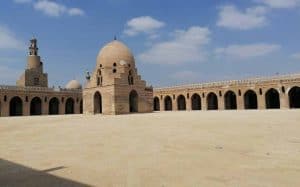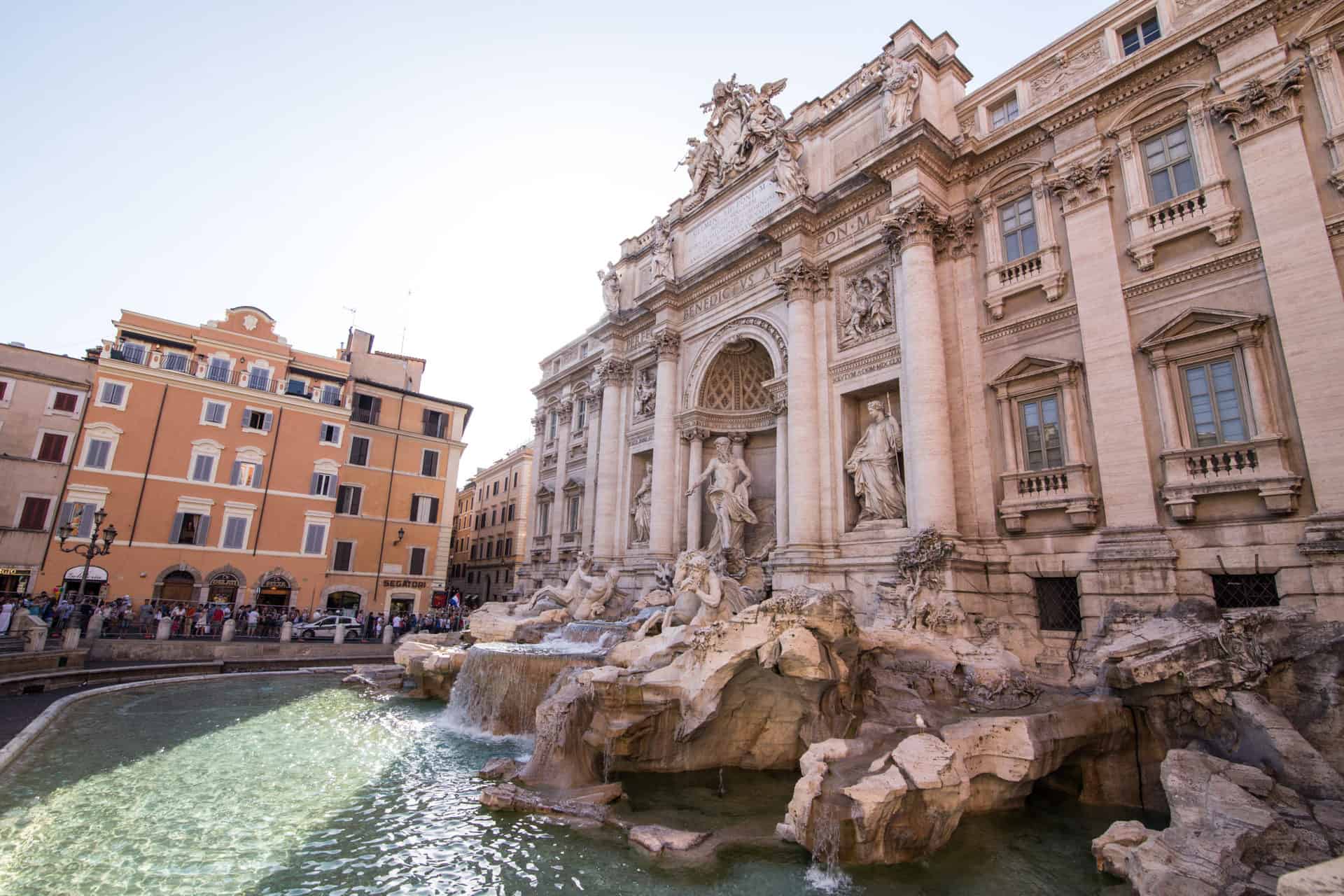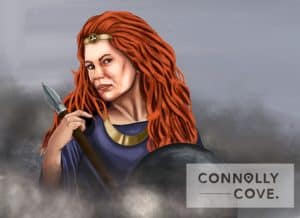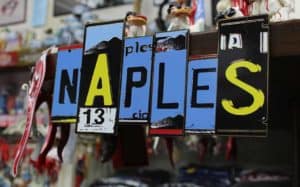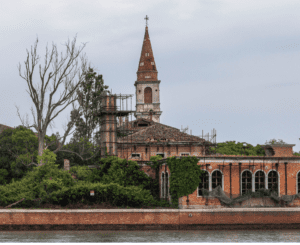Fargo’s Frozen Midwest: Unveiling the Region’s Infamous True Crime History

Updated On: April 04, 2024 by Maha Yassin
As we traverse the icy plains and delve into the frigid heart of the Midwest, we find that Fargo stands out as not just a city but a narrative that has captivated audiences with its blend of true crime storytelling and fictional drama. The TV series ‘Fargo‘, inspired by the original film, takes viewers on a twisted journey through crimes that, while not true in the factual sense, carry a profound essence of reality. It’s a tour de force of compelling characters woven into tales that, despite being fabricated, hold a mirror to the genuine human condition and the raw, often chilling spirit of Americana.
Our fascination with such narratives propels us to explore the blurry line between true crime sagas and the artistic license of creators. It spotlights how landscapes and locations contribute to the storytelling, becoming characters in their own right, and how the anthology approach of the series allows each season to introduce an evolving cast yet maintain thematic continuity. The show has garnered critical acclaim and sparked discussions on the intricate dance between reality and fiction in the realm of crime dramas.
The Creation of a Phenomenon

In this exploration, we unveil how ‘Fargo‘, the critically acclaimed FX drama, transformed into a cultural phenomenon. We’ll dissect the visionary force behind the series and its evolution.
Mind Behind the Midwest Masterpiece
Noah Hawley, the creator of the series, is the mind behind the Fargo masterpiece. His vision for the anthology series blends the inspired quirks of the original Coen Brothers’ film with his rich tapestry of Midwestern narratives. Each season weaves eclectic references, including nods to ‘No Country for Old Men’ and fiction so compelling it seems tangible.
Fargo Across Time: From 1979 to 2019
‘Fargo‘ has journeyed through various eras, with each season highlighting a new story within the anthology framework:
- Season 2, set in 1979, delves into a murder case tied to the local crime syndicate.
- Season 3, based in 2010, features sibling rivalry and mishaps involving a rare stamp.
- Season 4 showcases a 1950 Kansas City gang war.
- Season 5 unveils mystery yet to unfold but promises the quintessential ‘Fargo’ blend of dark comedy and crime drama.
The series is a beacon of the FX network’s ability to present layered storytelling with a sharp, dramatic edge.
Blending Genres: Fargo’s Fabric

In the rich tapestry of television, Fargo weaves a masterful blend of elements that challenge the boundaries between reality and perception.
A Mix of Drama and Dark Comedy
Fargo, in its essence, is a multifaceted series where drama intertwines seamlessly with dark comedy. The narrative thrives on the juxtaposition of stark violence against the backdrop of the seemingly peaceful Midwest. In this contrast, the show finds its charm, drawing viewers into a mystery-laden journey filled with unexpected turns. The element of humour is not merely for entertainment but to intensify the tension, creating moments that are as unsettling as they are comedic.
Horror and Humor: A Delicate Balance
Walking the delicate line between horror and humour requires a deft hand. Fargo manages to inject moments of horror into its storytelling, creating a reality that is both terrifying and absurdly funny. This balancing act is a testament to the show’s darkly comic roots, where the perception of horror often flips into laughter and vice versa, keeping the audience in a constant state of anticipation. Through this, Fargo crafts a unique blend of entertainment that keeps us intrigued and eager to see how the tension will unfold.
Fargo’s Evolving Cast

Fargo has consistently captivated audiences with its ever-changing roster of complex characters and the accomplished actors who bring them to life. Each season introduces new faces, ensuring the series remains fresh and engaging.
Spotlight on New Characters Each Season
From the manipulative Lester Nygaard to the ambitious Joe Bulo, Fargo has a tradition of introducing memorable characters, played by a diverse cast, who navigate the show’s crime-ridden landscape. For instance, Season 5 sees Juno Temple embodying the intelligent and resourceful Dorothy ‘Dot’ Lyon, while Lamorne Morris plays the sharp-witted Wrench. The fresh roster extends to Richa Moorjani portraying Indira, with the narrative weaving these new arrivals into the intricate Midwest tapestry.
A Star-Studded Roll Call
Fargo’s ensemble boasts high-calibre talent, including Billy Bob Thornton, Martin Freeman, Kirsten Dunst, and Patrick Wilson. With each season set in a different era, even historical figures like Ronald Reagan have been portrayed, with Bruce Campbell taking on the presidential role. Notably, Season 5 adds Jon Hamm, Jennifer Jason Leigh, and Joe Keery to the roster, further elevating the critically acclaimed series, which has garnered attention from the Golden Globes for its acting prowess.
Landscapes and Locations
In exploring true crime across Fargo’s icy expanse, we unveil the chilling beauty of landscapes that have silently witnessed tales of infamy.
From Minnesota to the Wider Midwest
The Midwest is a fabric woven with numerous tales, some enthralling and others dark. Minnesota, lovingly dubbed ‘The Land of 10,000 Lakes’, provides a serene backdrop, juxtaposing the stark narratives of true crime unfolding on its soil. The vastness of this region stretches beyond, where states like North Dakota punctuate the landscape with their tales. Cities like Kansas City and Sioux Falls serve as important cultural and geographic waypoints in the Midwest tapestry, offering unique insights into America’s heartland and the stories it harbours.
Americana Immortalised
Driving through the small town of Luverne, we encounter quintessential American scenes: main streets lined with period architecture as if frozen in time. These locations immortalise a distinct slice of Americana, hosting stories that seem to leap from the screen into the real world. Whether it’s the hardware store that bears the scars of a historic shootout or the courthouse steps where justice was served, the Midwest serves as America’s sprawling canvas, where each location represents a frame in the epic saga of true crime.
True Crime and Fictional Truths

In the realm of entertainment, particularly within the “Fargo” universe, the lines between true crime and creative storytelling often blur to craft narratives that captivate us.
The ‘True Story’ Hook
The Coen brothers’ infamous “true story” preface in the original Fargo film and the subsequent TV series adaptation has always been a clever narrative device. It’s a unique blend of fact and fiction, starting with a statement that claims a basis in reality. Though not factual, this proclamation sets a tone for the story, implying a layer of authenticity that piques our curiosity. The history of true crime in the Midwest, as explored in “Fargo,” invites us into a world where sensibility meets the bizarre.
Artistic Licence Meets Reality
Taking artistic licence to new heights, “Fargo” intersects imagined scenarios with elements that reflect our reality. For instance, Season 4 depicts a historically pivotal time in Kansas City, merging true crime lore with a narrative that, while not a true story, feels convincingly real. This method allows us to explore the societal undercurrents of the time, including the amalgamation of cultures and the dark underbelly of American ambition.
Our understanding of the relationship between crime, truth, and fiction is thus both grounded and expanded, as we realise that true crime as a genre can be a canvas for profound artistic expression, providing a fascinating experience irrespective of the story’s factual accuracy.
Investigative Elements

When embarking on Fargo’s Frozen Midwest: A True Crime Tour, the police play a crucial role in shaping our journey, with their procedures and practices shaping the narrative that unfolds.
Police Procedures and Peculiarities
We understand that the influence of police work extends beyond mere evidence collection. It encompasses a range of activities, from the initial response to a crime scene to the careful interrogation techniques used to uncover the truth. The peculiarities in these procedures are often influenced by the unique challenges posed by Fargo’s frigid climate and its impact on crime-solving.
For instance, preserving a crime scene in sub-zero temperatures requires specific know-how. Our sources have indicated that extreme cold can preserve and obscure forensic evidence. The police must navigate these conditions adeptly.
Moreover, police interviews and interrogations present their quirks within the Midwest context. Consider the tragic case where a husband is suspected of foul play—officers must balance empathy with a systematic approach to ascertain the facts, often under the weight of community scrutiny and pressure.
Throughout our tour, we’ll highlight these investigative elements and how they’ve adapted to the local environment, providing insight into the unique fabric of Midwest law enforcement.
The Anthology Approach

Fargo’s visionary anthology format reshapes how we approach storytelling on television. Each season offers fresh narratives, a new cast, and intriguing references to true stories, presenting distinct tales of crime amidst the frozen Midwest landscapes.
Narrative Innovation in TV Storytelling
In embracing the anthology series model, we observe a true narrative innovation in TV storytelling. Each instalment operates independently, with its plot, cast, and characters, yet it remains united under the thematic and stylistic banner of the original Fargo film’s spirit. The anthology format allows new characters to emerge and explore themes of morality, chance, and the human condition without needing a traditional, continuous storyline.
Our viewers experience an array of complex, morally ambiguous characters played by different actors each season. This refreshment of the cast ensures ongoing originality and an opportunity to delve into a wide pool of talent. We can explore diverse story arcs, each referencing a ‘true story’ motif, which has become a cornerstone of the show’s charm. These are often fictionalised for dramatic effect, but they relay a sense of authenticity that enriches the viewing experience.
Thus, the anthology series framework positions Fargo as a standout in television for its bold approach to narrative structure and its deft balance of new storylines within the familiar setting that fans have come to revere.
Themes and Motifs

In our tour of ‘Fargo’s’ chilling landscape, we uncover a tapestry of thematic elements that reveal much about the American socio-cultural condition and individual identity within the crime framework.
Exploring Socio-Cultural Dynamics
In ‘Fargo’, the frigid Midwest serves not just as a backdrop but as a character that shapes the socio-cultural dynamics at play. The series adeptly portrays the tension between seeming normality and the undercurrent of violence that disrupts it. This conflict is a recurring motif, whether it’s between crime families vying for territorial control or Joe Bulo’s efforts to expand a syndicate’s influence. The history of the Midwest, often depicted as tranquil, belies its storied past teeming with notorious crimes and action-packed showdowns that the series brings to life.
Family, Power, and the Individual
At the heart of ‘Fargo’ lies the exploration of family dynamics and the concept of power — both at the familial and individual levels. The show’s narrative often contrasts the allure of power within a crime family against the individual’s autonomy. Characters are frequently portrayed as being caught in the crosshairs of these opposing forces. For instance, the series has garnered Emmy-winning acclaim for its intricate portrayal of individuals who confront or succumb to the enticements of power. The balance of comedic elements with stark action underscores this struggle and reinforces the complex nature of America’s obsession with success and self-identity.
Through our tour, we curate an experience that spotlights these themes and motifs and invites reflection on their portrayal within ‘Fargo’s’ narrative framework.
Cultural References and Settings

In exploring “Fargo’s Frozen Midwest: A True Crime Tour,” we delve into the rich tapestry of time and truth that paints the show’s cultural landscape.
The Decades-Spanning Backdrop
“Fargo“, in its various seasons, sets its tales against the stark, icy environment of the Midwest, spanning several decades. In the second season, viewers are taken back to 1979, a pivotal year that reflects the turmoil and transitional period of American history. The backdrop not only serves as a silent character but also envelopes real cultural references, such as the campaign of Ronald Reagan, adding a layer of authenticity to the fictional town’s narrative.
Real Events Within Fictional Frames
Whilst “Fargo” is lucid in its declaration that the story is true, it masterfully weaves real events and societal moods into its fictional frames. Season 2 intertwines real historical tensions with its narrative, commenting on issues of the time without being bound by complete historical accuracy. By contrast, season 4 does a time leap to 2019 and continues this thematic juxtaposition, blurring the lines between what is real and what is part of Fargo’s darkly comedic universe.
Recognition and Impact

In assessing Fargo’s Frozen Midwest: A True Crime Tour, we find its remarkable influence within the spectrum of crime tours and its reception of industry accolades.
Awards, Acclaim, and Audience Reception
In entertainment and educational experiences, Fargo’s Frozen Midwest has secured a unique place. Its reception has echoed through audience testimonials and critiques, marking it as an exceptional encounter with true crime’s daunting and enthralling world. Not only has it been championed by its attendees for its meticulous curation and engaging narrative, but it has also been recognised within the industry, drawing parallels to Emmy-winning productions in terms of its storytelling quality.
While the tour may not be directly connected to television’s Golden Globes, its level of detail and craft parallels the excellence that such awards celebrate. Audience members often leave with a deeper, more nuanced understanding of the cases discussed – a testament to the tour’s impact on public knowledge and its contribution to the genre.
Each step of the tour is laden with factual depth, ensuring that visitors leave entertained and more informed – an effect reflected clearly in the positive reviews and return visitors who offer effusive praise for our compelling delivery of true crime narratives. This reception underscores our commitment to responsible storytelling within the community.
Behind the Scenes

Embarking on a true crime tour through the icy landscapes of “Fargo” Season 2 offers us an exclusive glimpse behind the curtain of its production and the unyielding influence of the original Coen Brothers film.
Insights into Production and Directing
The making of “Fargo” Season 2 necessitated a return to the chilling climes of the Midwest, despite filming on a Calgary ranch. The show’s creators meticulously orchestrated scenes to preserve the authentic feel of a frosty Midwestern town. The directors were tasked with paying homage to the Coen Brothers’ unique visual and narrative style and retaining the dark humour and moral complexity that is a hallmark of the series. These elements are compounded by the pressure of living up to the show’s Emmy-winning pedigree.
Staying true to the essence of the Midwest, the production team’s commitment to detail is evident in every aspect, from the vintage Americana set dressing to the suspenseful orchestration of the show’s signature dramatic standoffs.
Coen Brothers’ Legacy and Impact
The origins of “Fargo” lie with the Coen Brothers’ acclaimed 1996 film of the same name. While drawing inspiration, the series has carved out its own identity, yet it still includes numerous references to the original movie’s themes and motifs.
The craft and care in adapting the Coen Brothers’ legacy to the small screen solidifies “Fargo’s” place as an exemplary true crime anthology. The show pays tribute to the film through direct allusions and subtle nods in dialogue and plot structure, ensuring the legacy endures and evolves with each season.

FAQs
Before diving into the intricate weave of Fargo’s true crime tapestry, we’ve compiled essential queries surrounding its narrative, setting, and historical accuracy. These nuggets of wisdom might lie dormant, waiting for your curiosity to awaken them.
What inspired the narrative of Fargo’s first season?
While not directly recounting a true event, the inaugural season of Fargo draws its mood and tone from a combination of true crime tales and fictional elements, much like the Coen brothers film it is based upon.
Is Fargo’s second season derived from actual events?
Like the first, Fargo’s second season is a creative orchestration, not directly based on a specific true story but leveraging the aesthetic of true crime chronicles associated with the Midwest’s past to shape its story.
Where is the setting for the Fargo television series?
The setting for the television series spans various locations within the frigid and stark landscapes of the upper Midwest, encapsulating the essence of this region in both visceral backdrop and deep-digging narratives.
Can one access the true history of Midwestern crime in a digital format?
Indeed, while Fargo may present a dramatised version of Midwestern crime, those interested in the actual history can explore digital archives and specific publications dedicated to real-life crime stories from this region.
Who is Barton Brixby in the context of Fargo’s true crime narrative?
Barton Brixby is a fictional author referenced within the Fargo anthology, conceived for the show’s universe and its stylised representation of Midwestern crime.
What book explores the history of true crime in the Midwestern region?
For enthusiasts seeking a deeper understanding of Midwestern true crime beyond the fictional world of Fargo, there are compendiums and works that delve into the real stories — some of which are mentioned or mirrored within the context of the series.


